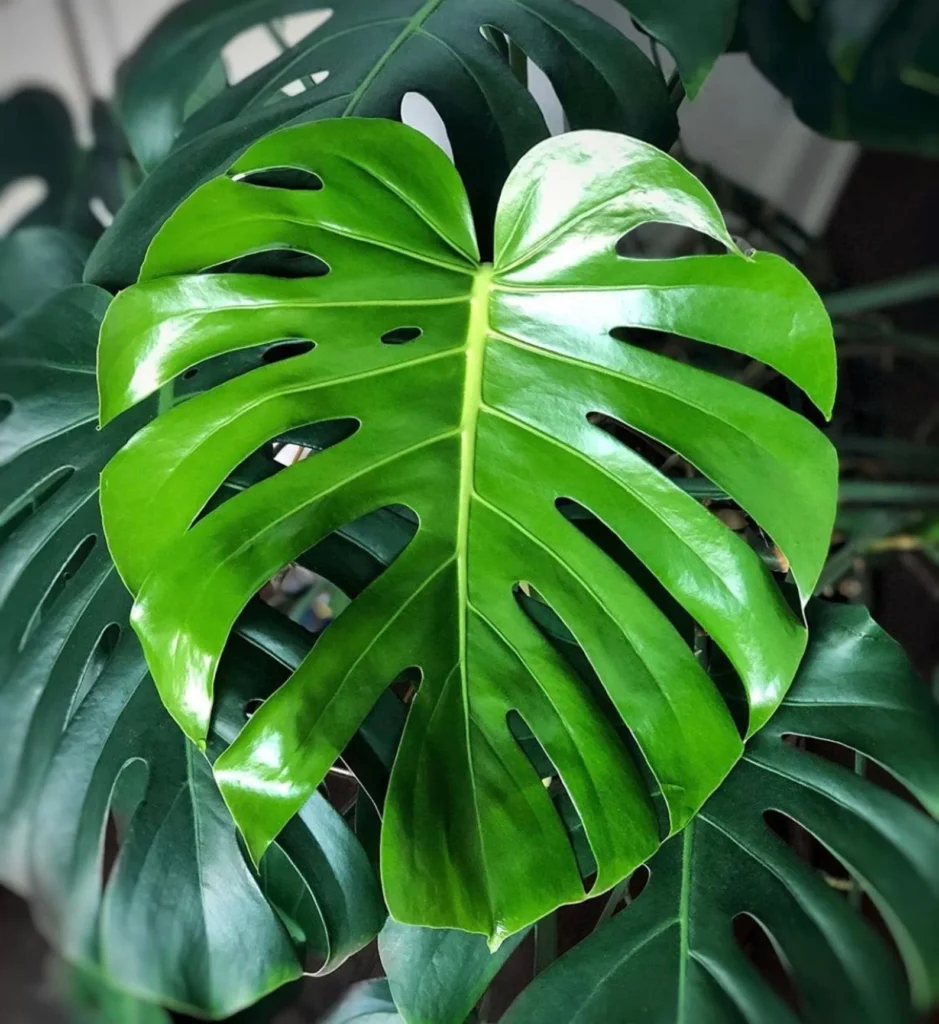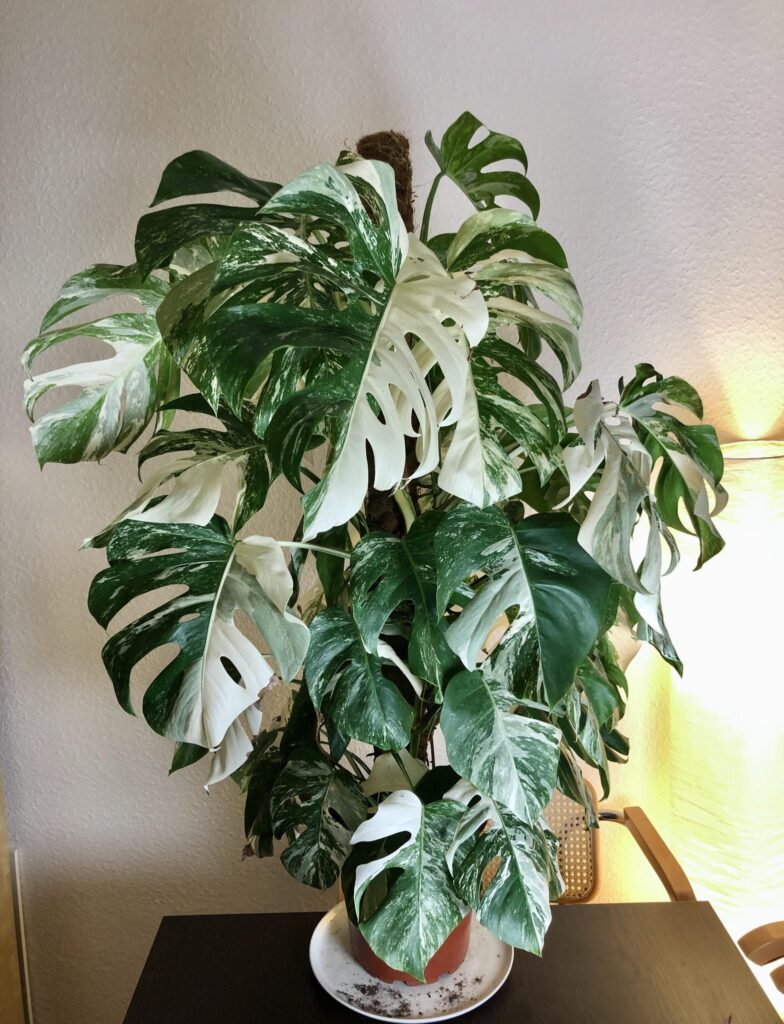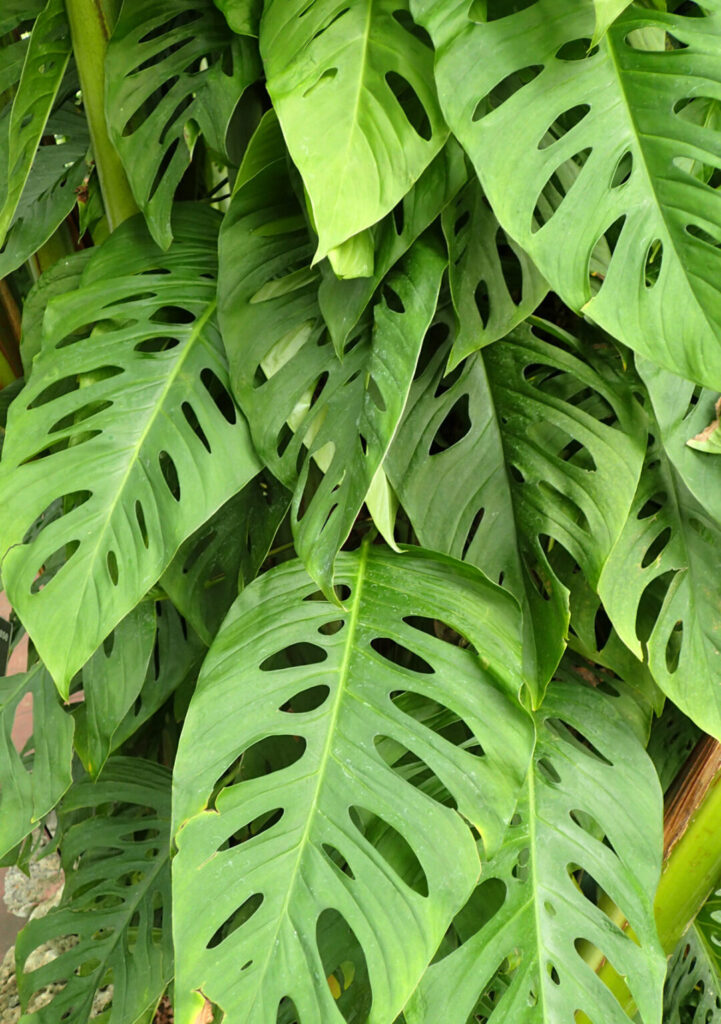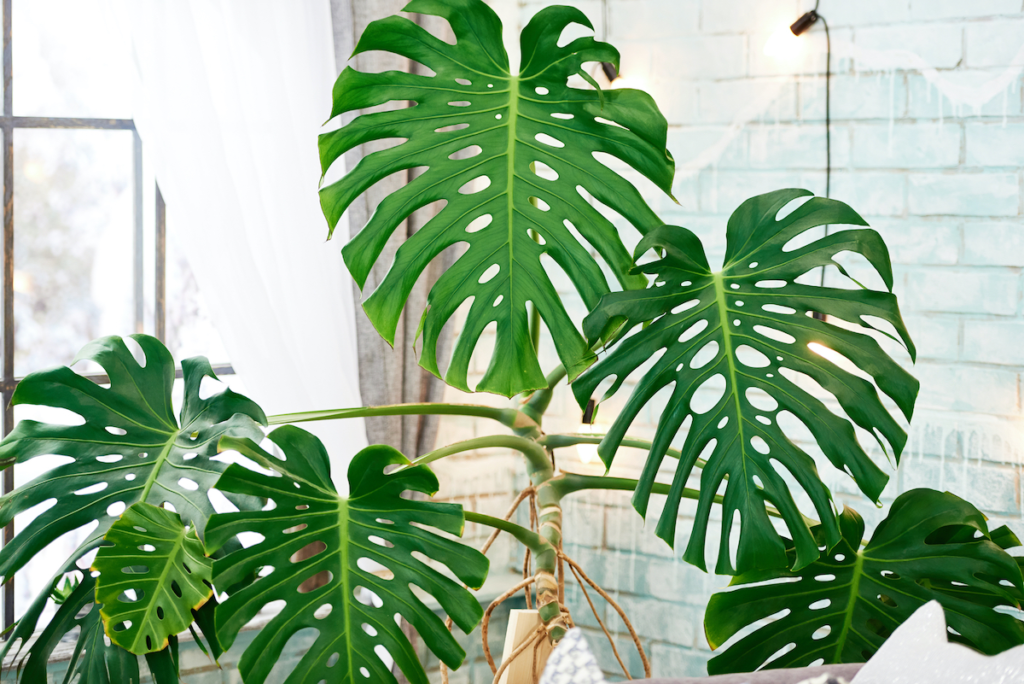
I love the name, tantalising and exotic, lush and luxuriant, its fruits good enough to feast on, and in hot climates feast you can. It is one of the natural wonders of the plant kingdom. Its huge popularity as an indoor plant has survived and even grown through the decades and very deservedly so. Few plants match both their uniqueness and beauty.
They are a no fuss plant, near impossible to kill, and thus the perfect plant for beginners or those with deadly black thumbs. I have seven mature plants in my own indoor and undercover outdoor plant collection and never have I experienced the sadness of a single passing of one. It is right up there in my top three favourite indoor plants and is yet another plant I just love to bits.
HISTORY
Monsteras is a member of the Araceae or Arum family. They are native to the tropical forests of the West Indies through to Central America. In their natural habitat, the genus monstera climb up the trunks and along the branches of trees, clinging to the bark by means of thick aerial roots, which not only anchor the plant to the tree but also help it to take up water and nutrients.
Monsteras have ever shiny lustred leaves and when mature may grow up to 60cm across. The leaves are basically heart shaped but deeply perforated from the edges almost to the central vein. It is if an artist has beautifully crafted the incisions in the foliage. The reason for this unique foliage? it is due to evolution. The breaking up of the leaf area helps the plants in the wild to withstand high tropical winds where the holes allow wind to pass through unhindered, preserving the large leaves from damage.
VARIETIES

There is a truly fabulous, variegated variety, called ‘Thai Constellation’ with its stunning cream and white patterned foliage. I have only one and it a total prize. Sadly, it is near impossible to find and rarely if ever available. When first released, they were heavily advertised, though the numbers were severely restricted, only six per store and priced at the exorbitant amount of $200 apiece. Regardless it was a case of the Hunger Games, you would kill everyone around you to own one. They were sold out before they hit the floor. Loud complaints and raging anger duly followed for those who missed out. Today their price has halved to $99, but they are still very hard to find for sale. Bugger the price, get one when you can, for it will survive for many a year and you will never regret it.
There is also a smaller, miniature leaved variety M. adansonii, commonly called Monkeys Mask. It is super cute with its much smaller leaf size and its delicate leaf perforations. However, sadly for me it is nowhere as hardy in the cold months of winter. But maybe I will give it another go.

CULTIVATION AND CARE
Monsteras are relatively immune to neglect and lapses of care and attention. However as in most cases, if love and attention is provided, bingo, off they go in a blast of luxuriant new growth just like a ‘Jack and the Beanstalk’. They quite enjoy a slightly root bound existence, however you should repot every second year or so into a larger pot with a good quality indoor planting mix, that is one rich in peat or coco moss, until you reach a final pot size of about 300ml or 400 ml. After that just dress with new potting mix on top. Never sit it in direct sunlight. It will tolerate quite dark areas but not for extended periods of time. At times Monsteras have the tendency to become top heavy and venture sideways. Thus, when repotting you should include a moss pole to tie the stems and aerial roots to the pole.
General advice is to let the plant soil to dry out completely before watering again. However, for me in the hotter summer months, all my monsteras sit in a one and a half-sized saucers larger than the pot itself. This ensures that the plant receives a thorough drenching, and the excess water can be collected and kept in reserve in the oversized saucer and watered from the bottom up. When the reservoir of water in the saucer is empty, I water again. In summer it is twice a week and in winter once every ten days or so. You can fertilise once a fortnight if you remember.

Monsteras can also successfully grow in water. Two years ago, I placed a small broken off branch in water. Somehow against all odds, it has survived 2 years living outside under shade cloth, experiencing bitter cold winters, with temperatures of minus 8 degrees Celsius or more the norm. It is a mighty miracle and a huge halleluiah that it is still alive, though admittedly only a new leaf or two appear each year. I have never changed the water or added anything. I think it needs potting up, but it looks so very pretty in its large Italianate patterned jug, and I am a little bit very scared that if I move it from its present circumstances and change its growing media it may not survive. And so it stays as it is, good and happy.
Happy gardening and have fun,
Regards Ned McDowell.